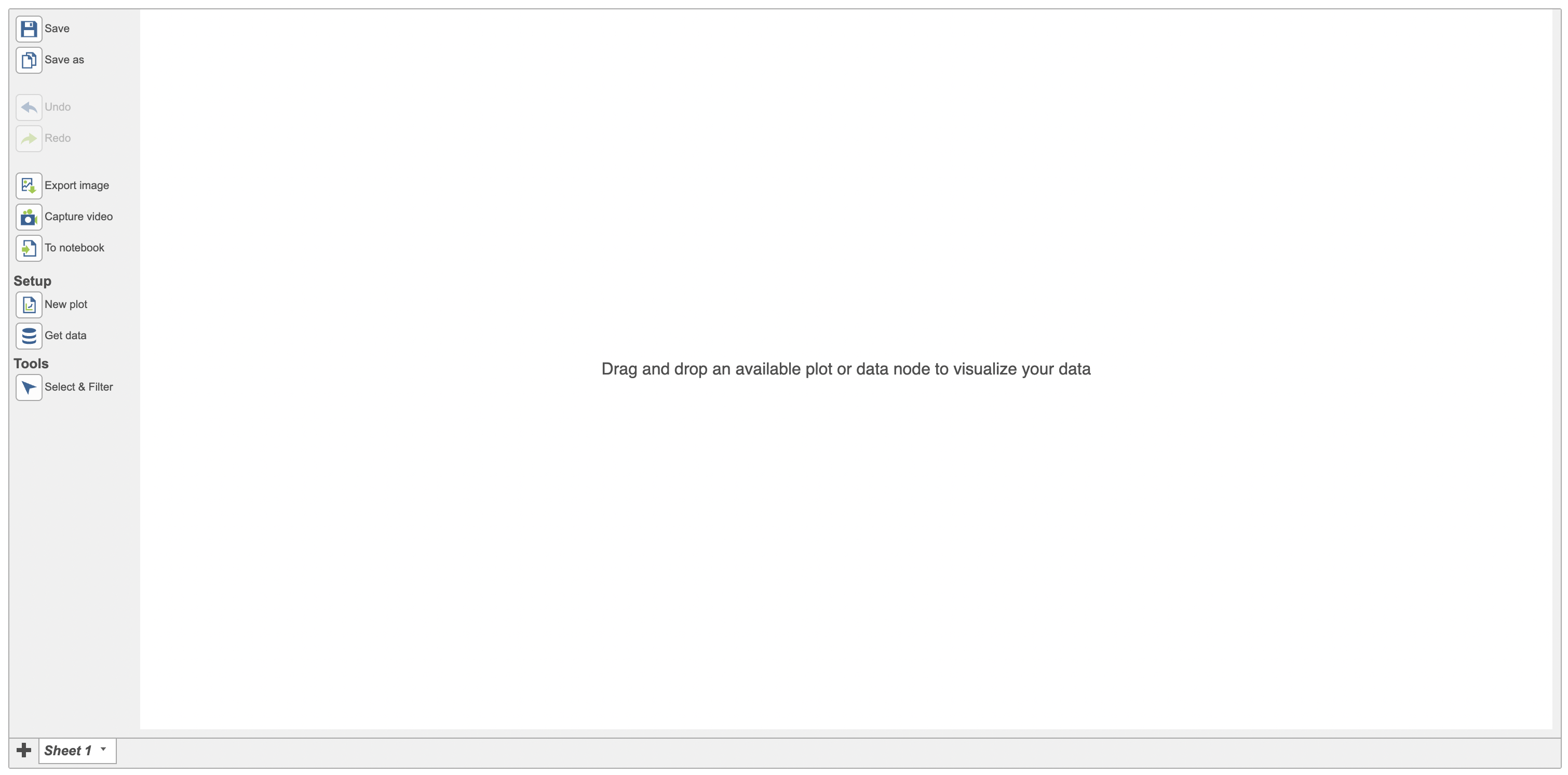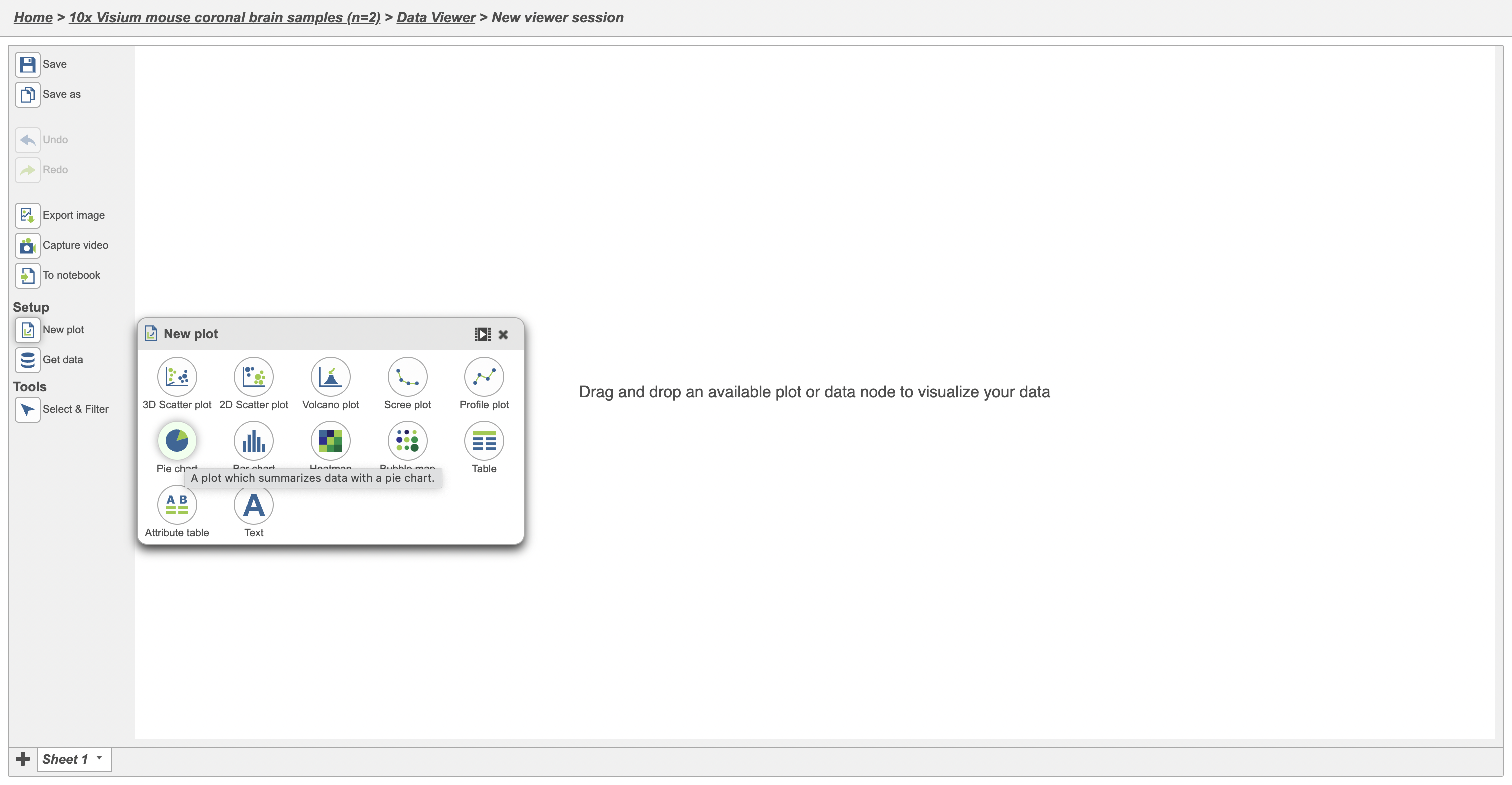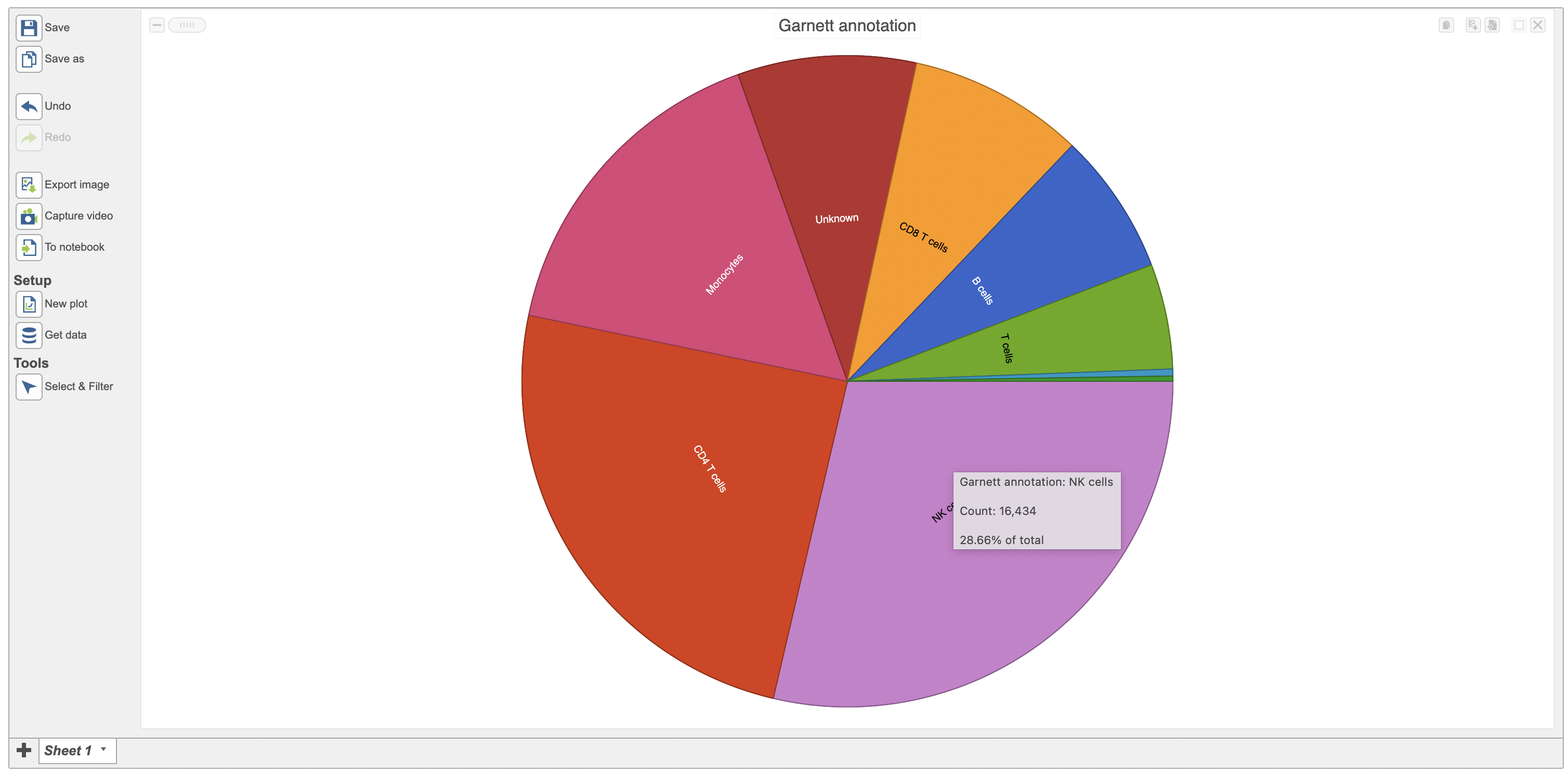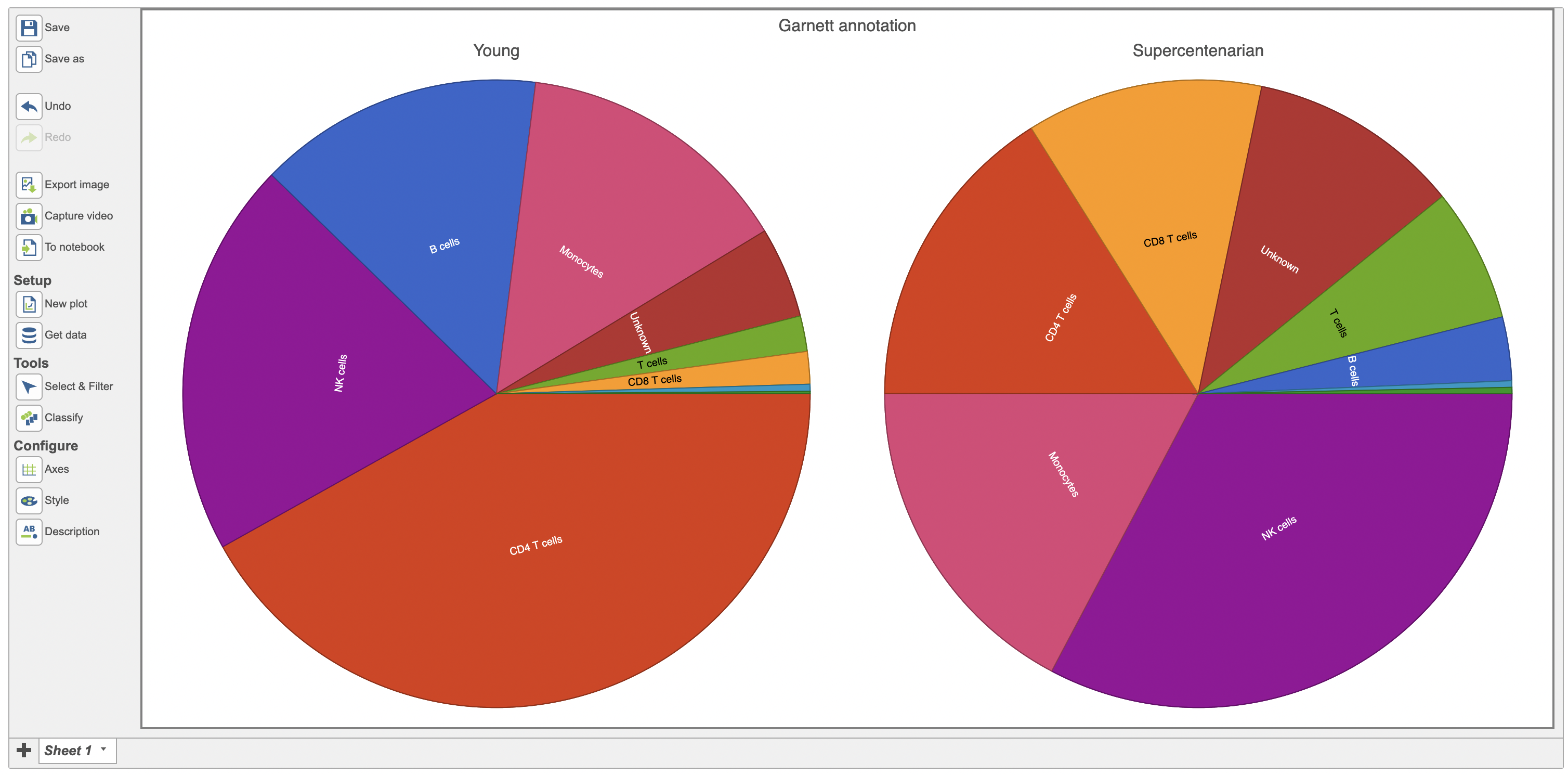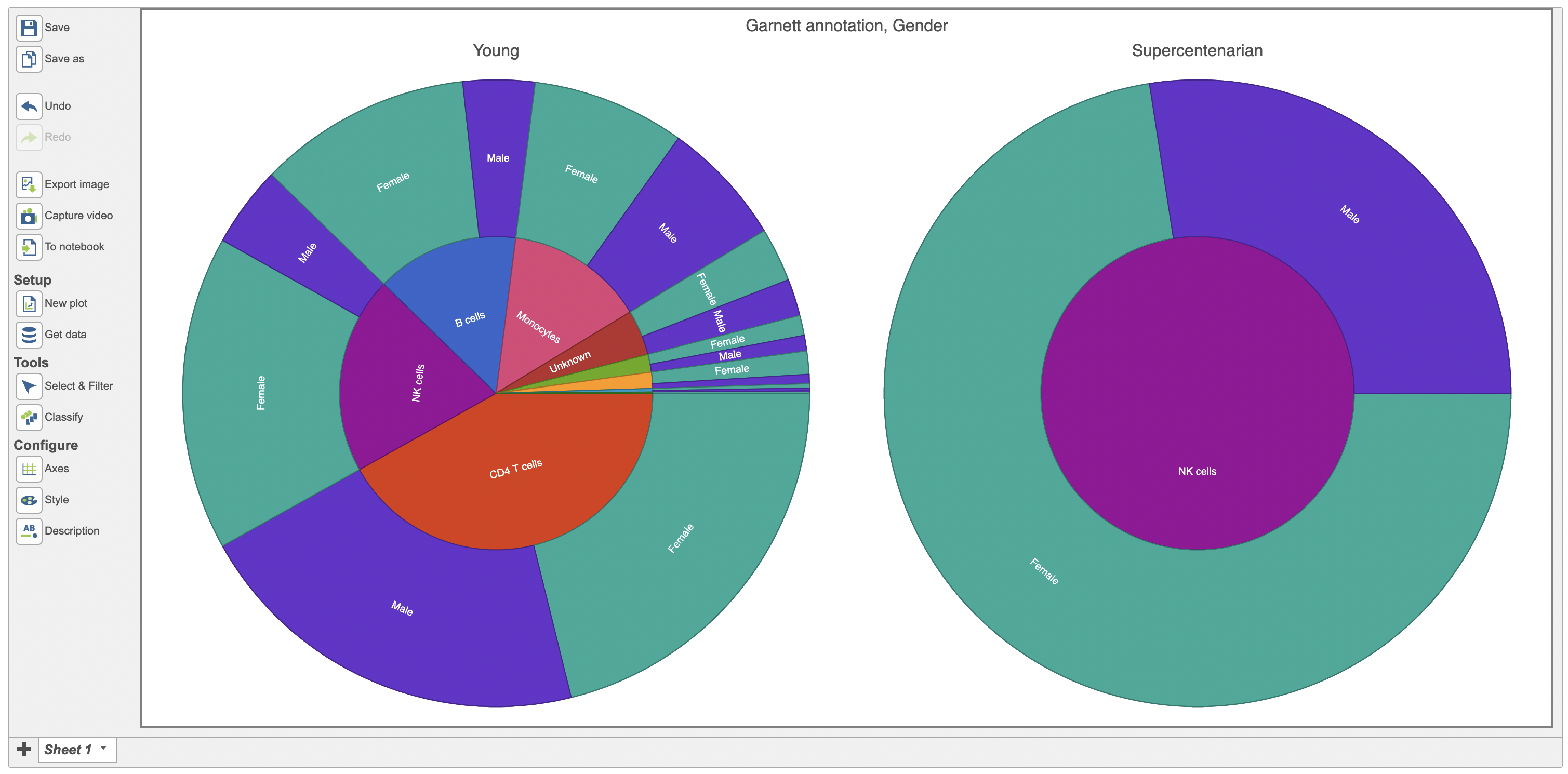A Pie Chart is a type of graph that displays data in a circular graph. It gives you a snapshot of how a group is broken down into smaller pieces. Because the pieces of a Pie chart are proportional to the fraction of the whole in each category. In order to make a Pie chart, you must have a list of categorical variables (descriptions of your categories, like ‘cell type’) as well as numeric variables (e.g., cell numbers). In Partek Flow, the default numeric variable is the cell numbers. Therefore, the Pie chart indicates the fraction of the whole cell numbers in each category.
To make a Pie chart, open a new Data Viewer session in Flow (Figure 1).
Select New plot > Pie chart from the menu on the left. Then select any data node to create a new empty Pie chart (Figure 2).
Categorical attributes that can be used for the Pie chart would display after any data node from the Data card on the left side of the Data Viewer has been clicked.
Simply select the attribute, in this case cell type, to generate a new Pie chart (Figure 3).
A Pie chart that demonstrates the fraction of the whole cell numbers in each sample has been created (Figure 4).
The specific cell number in this category and its percentage of total would appear when a cursor is moved over on it. For instance, NK cells include 16,434 cells which accounts for 2866% of the total cells in the study (Figure 5).
Accessing the Configure > Axes menu you can easily split the plot by any categorical attribute available, in this case the Pie chart was split by age (Figure 6)
If more than one categorical attribute were added to the data, Pie chart would have two different modes - Pointer mode and Zoom mode (Figure 7). The default is Pointer mode, the Zoom mode is accessed by clicking on the zoom icon and subsequently clicking on any slice of interest. In this case Figure 7 shows the distribution of NK cells between male and female patients in the supercentenarian panel.
Once you are pleased with the appearance of the Pie plot, push Export image button to save it to the local machine or click Save button to save the Data Viewer. The resulting dialog (Figure 8) controls the Format, Size and Resolution of the image file. The image will be saved in your favorite format (.svg, .png and .pdf).
Additional Assistance
If you need additional assistance, please visit our support page to submit a help ticket or find phone numbers for regional support.
